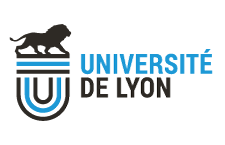Unités de recherche
Partenaire 10: Laboratoire de Biomécanique et Mécanique des chocs
Biologie, médecine, santé
- Adresse :
- LBMC UMR_T 9406 — Laboratoire de Biomécanique et Mécanique des Chocs,
Ifsttar — Institut Français des Sciences et Technologies des Transports, de l'Aménagement et des Réseaux,
UCBL — Université Claude Bernard Lyon 1.
25 Avenue François Mitterrand, Case 24
69675 BRON cedex - Sur Internet :
- http://www.lbmc.ifsttar.fr/
- Tutelle :
- UCBL - IFSTTAR
Organisation
Représentant: David MITTON
In the “Impact Biomechanics" Team, the research is based on both experimental and numerical approaches on human tissues and focuses mainly on the thorax and the abdomen. For example, regarding the abdomen, the team is a Center of Expertise for an international project on human modelling (GHBMC). The expertise on the abdomen also leads to applications for health technologies. The general approach is a multi-scale approach to assess, understand and model the variability and more specifically ageing effects for personalized virtual models. A specific focus is put on soft tissues and organs (full and hollow organs, vessels).
The multidisciplinary “Biomechanics and Orthopaedics” team, composed of specialists in biomechanics and orthopaedic surgery, is focused on clinical applications and has a long experience in 3D kinematics, 3D inverse dynamics, and personalized muscular modelling for both fundamental research and clinical investigations. The issues for the effective transfer of knowledge of musculoskeletal biomechanics to clinical applications are nowadays to improve the comprehension of the details of complex mechanisms that regulate the functioning of the joints, control muscle activity and mechanical loading of skeletal bone. For this, a multi-scale approach is necessary to refine the developed models up to describe the phenomena at the joint contact, particularly through the deformable modelling (FEM) incorporating the muscle action and the personalization of models from medical imaging.
In PRIMES project, the LBMC will bring its expertise in human numerical models. The development of such Virtual Humans will benefit from the collaboration with Physicists, Specialists in image processing and Physicians to address the main bottlenecks in numerical modelling of the human body.
Axe(s) de recherche
The objectives of the researches are to develop advanced biomechanical models to improve the knowledge of the human musculoskeletal kinematics and dynamics and to simulate the human body response, under static and dynamic loading, for evaluation and improvement of transport users’ safety or for health purpose. The unit is organized in four teams. The “Impact Biomechanics” and “Biomechanics & Orthopaedics” teams are involved in the project (Project Leader Philippe Vezin).
In numerical modelling of the human body, four scientific challenges are considered:
- Development of numerical human models with different mathematical approaches (Finite Element, Discret Element, etc.) to simulate the behaviour of the human tissues.
- Development of knowledge and assessment methods to take into account the inter-individual variability and the ageing effect to develop patient or subject-specific biomechanical human models from medical imaging.
- In vitro and in vivo mechanical characterization of mineralized and soft human tissues from cell to organ or segments (multi-scale approach) under static and dynamic loading for advanced biofidelic numerical model.
To achieve these goals, the teams work closely in collaboration with various academic and industrial partners in France (Equipex IVTV, GDR Stic-Santé, …), Europe (VHP NoE and VPH Institute, several PCRDT Projects among them the coordination of FP5 HUMOS2, FP6 Aprosys (Sub-project Biomechanics) and FP7 DHErgo projects, …) and internationally.



 Accueil
Accueil PRES LYON
PRES LYON Nous contacter
Nous contacter Archives
Archives WebAdmin
WebAdmin